HSBC 2009 Annual Report Download - page 181
Download and view the complete annual report
Please find page 181 of the 2009 HSBC annual report below. You can navigate through the pages in the report by either clicking on the pages listed below, or by using the keyword search tool below to find specific information within the annual report.-
 1
1 -
 2
2 -
 3
3 -
 4
4 -
 5
5 -
 6
6 -
 7
7 -
 8
8 -
 9
9 -
 10
10 -
 11
11 -
 12
12 -
 13
13 -
 14
14 -
 15
15 -
 16
16 -
 17
17 -
 18
18 -
 19
19 -
 20
20 -
 21
21 -
 22
22 -
 23
23 -
 24
24 -
 25
25 -
 26
26 -
 27
27 -
 28
28 -
 29
29 -
 30
30 -
 31
31 -
 32
32 -
 33
33 -
 34
34 -
 35
35 -
 36
36 -
 37
37 -
 38
38 -
 39
39 -
 40
40 -
 41
41 -
 42
42 -
 43
43 -
 44
44 -
 45
45 -
 46
46 -
 47
47 -
 48
48 -
 49
49 -
 50
50 -
 51
51 -
 52
52 -
 53
53 -
 54
54 -
 55
55 -
 56
56 -
 57
57 -
 58
58 -
 59
59 -
 60
60 -
 61
61 -
 62
62 -
 63
63 -
 64
64 -
 65
65 -
 66
66 -
 67
67 -
 68
68 -
 69
69 -
 70
70 -
 71
71 -
 72
72 -
 73
73 -
 74
74 -
 75
75 -
 76
76 -
 77
77 -
 78
78 -
 79
79 -
 80
80 -
 81
81 -
 82
82 -
 83
83 -
 84
84 -
 85
85 -
 86
86 -
 87
87 -
 88
88 -
 89
89 -
 90
90 -
 91
91 -
 92
92 -
 93
93 -
 94
94 -
 95
95 -
 96
96 -
 97
97 -
 98
98 -
 99
99 -
 100
100 -
 101
101 -
 102
102 -
 103
103 -
 104
104 -
 105
105 -
 106
106 -
 107
107 -
 108
108 -
 109
109 -
 110
110 -
 111
111 -
 112
112 -
 113
113 -
 114
114 -
 115
115 -
 116
116 -
 117
117 -
 118
118 -
 119
119 -
 120
120 -
 121
121 -
 122
122 -
 123
123 -
 124
124 -
 125
125 -
 126
126 -
 127
127 -
 128
128 -
 129
129 -
 130
130 -
 131
131 -
 132
132 -
 133
133 -
 134
134 -
 135
135 -
 136
136 -
 137
137 -
 138
138 -
 139
139 -
 140
140 -
 141
141 -
 142
142 -
 143
143 -
 144
144 -
 145
145 -
 146
146 -
 147
147 -
 148
148 -
 149
149 -
 150
150 -
 151
151 -
 152
152 -
 153
153 -
 154
154 -
 155
155 -
 156
156 -
 157
157 -
 158
158 -
 159
159 -
 160
160 -
 161
161 -
 162
162 -
 163
163 -
 164
164 -
 165
165 -
 166
166 -
 167
167 -
 168
168 -
 169
169 -
 170
170 -
 171
171 -
 172
172 -
 173
173 -
 174
174 -
 175
175 -
 176
176 -
 177
177 -
 178
178 -
 179
179 -
 180
180 -
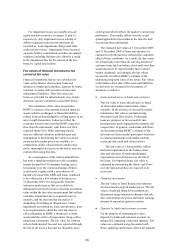 181
181 -
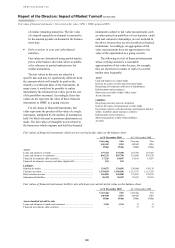 182
182 -
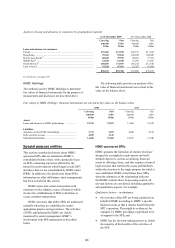 183
183 -
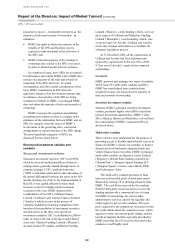 184
184 -
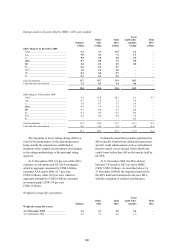 185
185 -
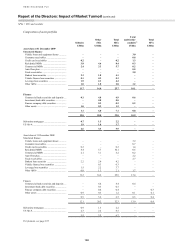 186
186 -
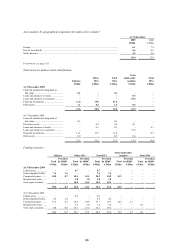 187
187 -
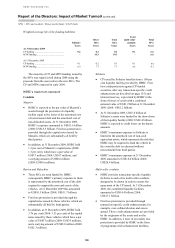 188
188 -
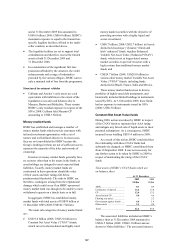 189
189 -
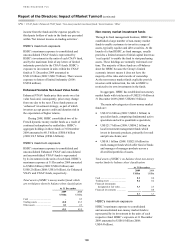 190
190 -
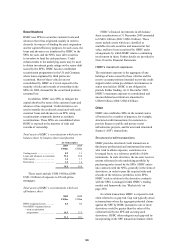 191
191 -
 192
192 -
 193
193 -
 194
194 -
 195
195 -
 196
196 -
 197
197 -
 198
198 -
 199
199 -
 200
200 -
 201
201 -
 202
202 -
 203
203 -
 204
204 -
 205
205 -
 206
206 -
 207
207 -
 208
208 -
 209
209 -
 210
210 -
 211
211 -
 212
212 -
 213
213 -
 214
214 -
 215
215 -
 216
216 -
 217
217 -
 218
218 -
 219
219 -
 220
220 -
 221
221 -
 222
222 -
 223
223 -
 224
224 -
 225
225 -
 226
226 -
 227
227 -
 228
228 -
 229
229 -
 230
230 -
 231
231 -
 232
232 -
 233
233 -
 234
234 -
 235
235 -
 236
236 -
 237
237 -
 238
238 -
 239
239 -
 240
240 -
 241
241 -
 242
242 -
 243
243 -
 244
244 -
 245
245 -
 246
246 -
 247
247 -
 248
248 -
 249
249 -
 250
250 -
 251
251 -
 252
252 -
 253
253 -
 254
254 -
 255
255 -
 256
256 -
 257
257 -
 258
258 -
 259
259 -
 260
260 -
 261
261 -
 262
262 -
 263
263 -
 264
264 -
 265
265 -
 266
266 -
 267
267 -
 268
268 -
 269
269 -
 270
270 -
 271
271 -
 272
272 -
 273
273 -
 274
274 -
 275
275 -
 276
276 -
 277
277 -
 278
278 -
 279
279 -
 280
280 -
 281
281 -
 282
282 -
 283
283 -
 284
284 -
 285
285 -
 286
286 -
 287
287 -
 288
288 -
 289
289 -
 290
290 -
 291
291 -
 292
292 -
 293
293 -
 294
294 -
 295
295 -
 296
296 -
 297
297 -
 298
298 -
 299
299 -
 300
300 -
 301
301 -
 302
302 -
 303
303 -
 304
304 -
 305
305 -
 306
306 -
 307
307 -
 308
308 -
 309
309 -
 310
310 -
 311
311 -
 312
312 -
 313
313 -
 314
314 -
 315
315 -
 316
316 -
 317
317 -
 318
318 -
 319
319 -
 320
320 -
 321
321 -
 322
322 -
 323
323 -
 324
324 -
 325
325 -
 326
326 -
 327
327 -
 328
328 -
 329
329 -
 330
330 -
 331
331 -
 332
332 -
 333
333 -
 334
334 -
 335
335 -
 336
336 -
 337
337 -
 338
338 -
 339
339 -
 340
340 -
 341
341 -
 342
342 -
 343
343 -
 344
344 -
 345
345 -
 346
346 -
 347
347 -
 348
348 -
 349
349 -
 350
350 -
 351
351 -
 352
352 -
 353
353 -
 354
354 -
 355
355 -
 356
356 -
 357
357 -
 358
358 -
 359
359 -
 360
360 -
 361
361 -
 362
362 -
 363
363 -
 364
364 -
 365
365 -
 366
366 -
 367
367 -
 368
368 -
 369
369 -
 370
370 -
 371
371 -
 372
372 -
 373
373 -
 374
374 -
 375
375 -
 376
376 -
 377
377 -
 378
378 -
 379
379 -
 380
380 -
 381
381 -
 382
382 -
 383
383 -
 384
384 -
 385
385 -
 386
386 -
 387
387 -
 388
388 -
 389
389 -
 390
390 -
 391
391 -
 392
392 -
 393
393 -
 394
394 -
 395
395 -
 396
396 -
 397
397 -
 398
398 -
 399
399 -
 400
400 -
 401
401 -
 402
402 -
 403
403 -
 404
404 -
 405
405 -
 406
406 -
 407
407 -
 408
408 -
 409
409 -
 410
410 -
 411
411 -
 412
412 -
 413
413 -
 414
414 -
 415
415 -
 416
416 -
 417
417 -
 418
418 -
 419
419 -
 420
420 -
 421
421 -
 422
422 -
 423
423 -
 424
424 -
 425
425 -
 426
426 -
 427
427 -
 428
428 -
 429
429 -
 430
430 -
 431
431 -
 432
432 -
 433
433 -
 434
434 -
 435
435 -
 436
436 -
 437
437 -
 438
438 -
 439
439 -
 440
440 -
 441
441 -
 442
442 -
 443
443 -
 444
444 -
 445
445 -
 446
446 -
 447
447 -
 448
448 -
 449
449 -
 450
450 -
 451
451 -
 452
452 -
 453
453 -
 454
454 -
 455
455 -
 456
456 -
 457
457 -
 458
458 -
 459
459 -
 460
460 -
 461
461 -
 462
462 -
 463
463 -
 464
464 -
 465
465 -
 466
466 -
 467
467 -
 468
468 -
 469
469 -
 470
470 -
 471
471 -
 472
472 -
 473
473 -
 474
474 -
 475
475 -
 476
476 -
 477
477 -
 478
478 -
 479
479 -
 480
480 -
 481
481 -
 482
482 -
 483
483 -
 484
484 -
 485
485 -
 486
486 -
 487
487 -
 488
488 -
 489
489 -
 490
490 -
 491
491 -
 492
492 -
 493
493 -
 494
494 -
 495
495 -
 496
496 -
 497
497 -
 498
498 -
 499
499 -
 500
500 -
 501
501 -
 502
502 -
 503
503 -
 504
504
 |
 |
179
For impairment losses on available-for-sale
equity and debt securities, see pages 31 and 35,
respectively. Any impairment losses relating to
ABSs recognised in the income statement are
recorded as ‘Loan impairment charges and other
credit risk provisions’. Impairment losses incurred
on assets held by consolidated securities investment
conduits (excluding Solitaire) are offset by a credit
to the impairment line for the amount of the loss
borne by capital note holders.
Fair values of financial instruments not
carried at fair value
Financial instruments that are not carried at fair
value on the balance sheet include loans and
advances to banks and customers, deposits by banks,
customer accounts, debt securities in issue and
subordinated liabilities. Their fair values are,
however, provided for information by way of note
disclosure and are calculated as described below.
The calculation of fair value incorporates
HSBC’s estimate of the amount at which financial
assets could be exchanged, or financial liabilities
settled, between knowledgeable, willing parties in an
arm’s length transaction. It does not reflect the
economic benefits and costs that HSBC expects to
flow from the instruments’ cash flows over their
expected future lives. Other reporting entities
may use different valuation methodologies and
assumptions in determining fair values for which
no observable market prices are available, so
comparisons of fair values between entities may
not be meaningful and users are advised to exercise
caution when using this data.
As a consequence of the market turmoil there
has been a significant reduction in the secondary
market demand for US consumer lending assets.
Uncertainty over the extent and timing of future
credit losses, together with a near absence of
liquidity for non-prime ABSs and loans, continued
to be reflected in a low volume of bid prices at
31 December 2009. It is not possible from the
indicative market prices that are available to
distinguish between the relative discount to nominal
value within the fair value measurement that reflects
cash flow impairment due to expected losses to
maturity, and the discount that the market is
demanding for holding an illiquid asset. Under
impairment accounting for loans and advances, there
is no requirement to adjust the carrying value to
reflect illiquidity as HSBC’s intention is to fund
assets until the earlier of prepayment, charge-off or
repayment on maturity. The fair value, by contrast,
reflects both incurred loss and loss expected through
the life of the asset, a discount for illiquidity and a
credit spread which reflects the market’s current risk
preferences. This usually differs from the credit
spread applicable in the market at the time the loan
was underwritten and funded.
The estimated fair values at 31 December 2009
and 31 December 2008 of loans and advances to
customers in North America reflected the combined
effect of these conditions. As a result, the fair values
are substantially lower than the carrying amount of
customer loans held on-balance sheet and lower than
would otherwise be reported under more normal
market conditions. Accordingly, the fair values
reported do not reflect HSBC’s estimate of the
underlying long-term value of the assets. Fair values
at the balance sheet date of the assets and liabilities
set out below are estimated for the purpose of
disclosure as follows:
• Loans and advances to banks and customers
The fair value of loans and advances is based
on observable market transactions, where
available. In the absence of observable market
transactions, fair value is estimated using
discounted cash flow models. Performing
loans are grouped, as far as possible, into
homogeneous pools segregated by maturity and
coupon rates. In general, contractual cash flows
are discounted using HSBC’s estimate of the
discount rate that a market participant would use
in valuing instruments with similar maturity,
re-pricing and credit risk characteristics.
The fair value of a loan portfolio reflects
both loan impairments at the balance sheet
date and estimates of market participants’
expectations of credit losses over the life of
the loans. For impaired loans, fair value is
estimated by discounting the future cash flows
over the time period they are expected to be
recovered.
• Financial investments
The fair values of listed financial investments
are determined using bid market prices. The fair
values of unlisted financial investments are
determined using valuation techniques that take
into consideration the prices and future earnings
streams of equivalent quoted securities.
• Deposits by banks and customer accounts
For the purpose of estimating fair value,
deposits by banks and customer accounts are
grouped by remaining contractual maturity. Fair
values are estimated using discounted cash
flows, applying current rates offered for deposits
